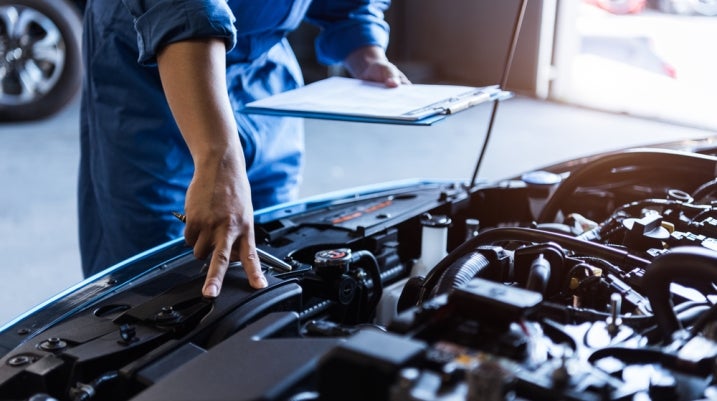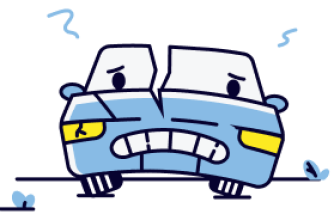When Should I Sue for Product Liability?

When you purchase a product, whether it’s a car, a kitchen appliance, a toy, or a medication, you have every right to expect it to work safely as advertised.
But sometimes, defective products can lead to serious injuries, permanent health problems, or even death.
If you or a loved one has suffered harm because of a dangerous or defective product, you may have grounds to file a product liability lawsuit.
But when exactly should you take legal action? How do you know if your situation qualifies? And what does the legal process involve?
What Is Product Liability?
Product liability refers to the legal responsibility of manufacturers, distributors, suppliers, and retailers for injuries caused by defective or dangerous products. If a product is designed or manufactured poorly or even marketed with misleading or incomplete safety information, it can place consumers at risk. The law allows victims to hold companies accountable for the harm these products cause.
In the U.S., product liability laws are mostly based on state statutes and common law principles, but some federal regulations also play a role, especially in industries like pharmaceuticals, automotive, and consumer electronics.
The Three Main Types of Product Defects
Product liability claims generally fall into three categories, depending on how the product was flawed:
1. Design Defects
These occur when a product is inherently unsafe because of the way it was designed, even before it was manufactured. For example, a car with a fuel tank positioned in a way that makes it prone to explosion during a rear-end collision would have a design defect.
2. Manufacturing Defects
These happen when a product is designed properly, but something goes wrong during the manufacturing process. A swing set with a cracked chain or a batch of medication contaminated during production are examples of manufacturing defects.
3. Marketing Defects (Failure to Warn)
This category covers products that are dangerous in ways that are not obvious and come with inadequate safety warnings or instructions. Think of a household cleaner that’s toxic if mixed with another common product, but the label fails to warn about it.
Common Examples of Product Liability Cases
Product liability claims can arise from virtually any type of product, but some categories are more prone to legal action due to the risks involved. Here are a few examples:
- Pharmaceuticals and medical devices: Faulty implants, dangerous drugs, and inadequate warning labels can all lead to injury.
- Automobiles: Defective airbags, brakes, seatbelts, or electrical systems can cause serious accidents.
- Children’s toys: Choking hazards, toxic materials, or poor construction can injure children.
- Home appliances and electronics: Fires, shocks, or malfunctioning parts can create hazards.
- Construction tools and equipment: Lack of safety guards or improper warnings can lead to workplace injuries.
- Cosmetics and personal care products: Unlisted allergens or harmful chemicals can cause burns, rashes, or systemic reactions.
If you’ve been injured while using any product as intended or even in a foreseeable way, you may have a case.
What Are Some Signs That You Have a Product Liability Case, and When Should You Consider Suing for Product Liability?
Not every product-related injury qualifies for a lawsuit. However, you should strongly consider legal action if your situation meets one or more of the following criteria:
You Suffered a Serious Injury
Minor cuts or bruises usually don’t justify the cost and effort of a lawsuit. But if you’ve experienced significant medical issues, like broken bones, internal injuries, neurological damage, burns, or long-term disabilities, you may be entitled to substantial compensation.
The Product Was Defective
To sue successfully, you’ll need to show that the product had a defect in its design, manufacturing, or labeling that made it unreasonably dangerous. This typically involves expert analysis, product testing, or evidence of similar complaints from other users.
You Were Using the Product as Intended
If you were using the product in a reasonable and foreseeable way when the injury occurred, even if you weren’t following instructions to the letter, you may still have a claim. Courts generally expect manufacturers to anticipate common misuse if it’s predictable.
The Product Was Misleadingly Advertised
Suppose that a product was designed to cook food very quickly. If you used the product according to the instructions and your food was dangerously undercooked, it may be because of a defect.
In cases like these, the safety of the product depends on the promise that it will work as advertised. A misleading product could cause severe injuries, illnesses, or other damage.
There Were Inadequate Warnings or Instructions
Even if a product is inherently dangerous (like power tools or chemicals), manufacturers are required to warn consumers of known risks. If you weren’t informed of a potential hazard that caused your injury, you could sue for failure to warn.
The Victim Required Medical Care
When you have sustained an injury because of a faulty or defective product, it is important to seek a medical assessment. This prioritizes your own health and safety.
Also, if you decide to file a product liability claim, it will be critical to have a record of the fact that you were medically treated for your injuries. Your attorney will use your medical records as a key piece of evidence in your case.
Others Have Been Injured by the Same Product
When a product causes harm to many people, like in the case of recalled drugs, dangerous cars, or defective electronics, your claim may be part of a mass tort or class action lawsuit, making your case even stronger.
If you have experienced any of these signs that you have a product liability case, reach out to Morgan & Morgan. Our experienced legal professionals have years of experience representing the victims of faulty and defective products.
Who Can Be Held Responsible?
One of the advantages of product liability law is the concept of strict liability in many states. This means you don’t necessarily have to prove negligence. You only need to prove that the product was defective and that the defect caused your injury.
Potentially liable parties include:
- Manufacturers: The company that designed or produced the product or its components.
- Distributors: Wholesalers, suppliers, and transporters who may have handled the product.
- Retailers: Even stores that simply sold the product can be liable in some cases.
- Licensors or brand owners: Companies that lend their name to a product made by a third party.
Sometimes multiple parties share responsibility. A lawyer can help you identify all liable entities in your case.
What Compensation Can You Recover?
Product liability lawsuits can result in a wide range of damages, depending on how the injury affected your life. Compensation may include:
Economic Damages
Economic damages are the financial losses a person suffers due to an injury and can include:
- Medical bills (past and future)
- Lost wages and loss of earning capacity
- Physical therapy and rehabilitation costs
- Costs of home modifications or mobility aids
Non-Economic Damages
Non-economic damages are compensation for intangible losses resulting from an injury, including:
- Pain and suffering
- Emotional distress
- Loss of enjoyment of life
- Disfigurement or permanent disability
Punitive Damages
If the defendant’s conduct was especially reckless or malicious, such as knowingly hiding a dangerous defect, you may also be awarded punitive damages meant to punish the company and deter future misconduct.
What’s the Process for Filing a Lawsuit?
Every product liability case is unique, but the general process follows these steps:
1. Free Case Evaluation
A product liability attorney at Morgan & Morgan can evaluate your case during a free consultation. If they believe you have a claim, they’ll begin gathering evidence and investigating the product.
2. Investigation and Expert Review
Your legal team will work with engineers, safety specialists, medical professionals, and other experts to analyze how the product failed and how it caused your injury.
3. Filing the Lawsuit
Once the evidence is ready, your attorney will file a formal complaint against the responsible parties.
4. Discovery and Negotiation
Both sides exchange evidence and may attempt to settle out of court. Many product liability cases are resolved through negotiated settlements without going to trial.
5. Trial (if necessary)
If no settlement is reached, your case will proceed to trial. Your attorney will present evidence and argue your case before a judge or jury.
6. Appeals (in rare cases)
If the court’s decision is contested, the case may go through appeals, but this is uncommon in most settlements.
How Long Do You Have to Sue?
Product liability claims are subject to statutes of limitations, which vary by state.
Some states offer extended timelines if:
- The injury wasn’t immediately apparent (like exposure to toxic chemicals)
- The victim was a minor at the time
- Fraud or concealment of the defect delayed discovery
To protect your rights, it’s best to speak with a lawyer as soon as possible after your injury.
What Should You Do After an Injury?
If you’ve been hurt by a defective product, your actions in the hours and days that follow can make or break your case. Here’s what to do:
- Seek Medical Attention Immediately: Your health comes first, and medical records will be key evidence.
- Save the Product (If Possible): Don’t throw away or alter the item that injured you. Preserve it as evidence.
- Document Everything: Take photos of your injuries, the product, and the scene. Save receipts, packaging, and instructions.
- Don’t Talk to the Manufacturer: They may try to offer a refund or get you to sign away your rights. Refer them to your attorney.
- Contact Morgan & Morgan: The sooner you involve a product liability attorney, the better your chances of building a strong case.
Morgan & Morgan Can Help
Being injured by a product you trusted is a violation of your safety and your rights. You deserve accountability, compensation, and justice. Whether you’re dealing with a recalled medication, a dangerous appliance, or a defective toy, you don’t have to face this alone.
If you’re asking, “Should I sue for product liability?” the real question might be, “Can I afford not to?”
Morgan & Morgan has a proven track record of standing up to powerful corporations and securing life-changing verdicts and settlements for injured consumers. Our product liability team has handled high-stakes cases involving defective drugs, medical devices, vehicles, consumer goods, and more.
We have the resources, reputation, and reach to go toe-to-toe with major manufacturers and hold them accountable. And because we work on a contingency basis, you pay nothing unless we win.
We’ve recovered billions of dollars for our clients, and we’re just getting started.
Let Morgan & Morgan fight for you. Contact us today for a free, no-obligation case evaluation.
Learn more
Injured? Getting the compensation you deserve starts here.

Injured?
Not sure what to do next?
We'll guide you through everything you need to know.